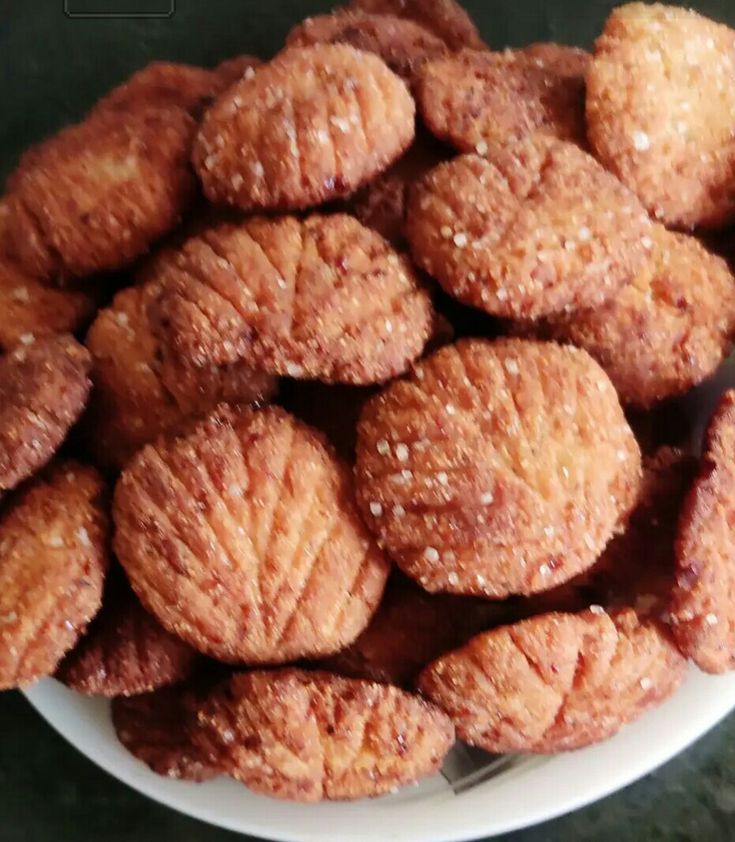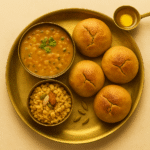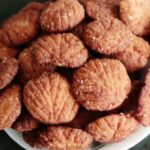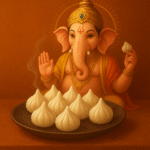The Best Fluffy Pancakes recipe you will fall in love with. Full of tips and tricks to help you make the best pancakes.
Thekua, also known as Khajuria, is a crispy, deep-fried Indian cookie made with wheat flour, jaggery, and ghee. Deeply rooted in the culture of Bihar, Jharkhand, and parts of Uttar Pradesh, this humble sweet snack is especially prepared during Chhath Puja, a major Hindu festival in Bihar that celebrates the Sun God and Mother Nature.
In this detailed recipe guide, we’ll explore the history, cultural significance, preparation, variations, tips, and storage of Thekua, along with a step-by-step traditional recipe.

Table of Contents
- What is Thekua?
- History & Cultural Significance
- Ingredients Needed
- Traditional Thekua Recipe – Step by Step
- Tips for Perfect Thekua
- Thekua Variations
- Storage & Shelf Life
- Thekua for Festivals
- Nutrition & Health Insights
- FAQs About Thekua
- Final Thoughts
1. What is Thekua?
Thekua is a traditional, deep-fried sweet from Bihar, India, also known as kajuria or khajoor. It’s made with whole wheat flour (atta), ghee, and jaggery (gur). Thekua is a popular snack and is also offered as prasad during Chhath Puja, a festival dedicated to the sun god, according to the Bihar Tourism department. Thekua is a Bihari deep-fried cookie made from whole wheat flour, jaggery (or sugar), and ghee. It’s often flavored with cardamom, coconut, fennel seeds, or dry fruits. Known for its crumbly yet crisp texture and rich caramel flavor, Thekua holds a special place in Indian kitchens.
It’s typically made during Chhath Puja, as it is considered a holy offering (prasad) to the Sun God. But it’s also enjoyed year-round as a tea-time snack or tiffin treat.
Cultural Significance:
- Thekua is a significant part of Chhath Puja, a festival celebrated in Bihar and other regions of India.
- It is offered as a sacred prasad (holy offering) during the festival.
2. History & Cultural Significance
Thekua, a traditional Indian sweet, has a history rooted in Bihar and is deeply connected to the Chhath Puja festival. It is believed to have originated during the Rigvedic period, around 3,700 years ago, and was initially used for medicinal purposes before becoming a prasad (religious offering). Thekua is made with wheat flour, jaggery, and ghee, and is often prepared with the help of family members during Chhath Puja. Thekua has been. In Bihar and eastern Uttar Pradesh, it’s not just food—it’s faith.
- Ancient Origins: Thekua’s history can be traced back to the Rigvedic period (1500-1000 BCE), where it was referred to as “Apupa” in the Rigveda.
- Regional Significance: Thekua is particularly popular in Bihar, Jharkhand, eastern Uttar Pradesh, and the Madhesh region of Nepal.
- Name and Tradition: The name “Thekua” is believed to be derived from the verb “thokna,” meaning “to hammer,” reflecting the traditional method of shaping the dough by pressing it into a mold.
- Chhath Puja: Thekua is the most common offering made during Chhath Puja, a four-day festival where devotees fast and worship the rising and setting sun.
- Symbol of Simplicity: Made from humble ingredients found in every household.
- Eco-Friendly Cooking: Traditionally made using mitti chulha (earthen stoves) and cooked on wood fire, enhancing its earthy aroma.
- Family Tradition: Making Thekua is often a family affair, with generations coming together to prepare this sweet treat.
- Medicinal Beginnings: Initially, Thekua was used for its medicinal properties before becoming a part of religious rituals.
- Beyond Prasad: While Thekua is a significant part of Chhath Puja, it is also enjoyed as a sweet treat throughout the year.
3. Ingredients Needed
Here’s what you’ll need for around 15–20 medium-sized Thekua:
Dry Ingredients:
- Wheat Flour – 2 cups
- Grated Jaggery – ¾ cup (can adjust to taste)
- Cardamom Powder – 1 tsp
- Dry Coconut (grated) – 2 tbsp (optional)
- Fennel Seeds (saunf) – 1 tsp
- Black Pepper (crushed) – ¼ tsp (optional)
- Salt – a pinch
Wet Ingredients:
- Ghee (clarified butter) – 2 tbsp (for dough)
- Water – as needed to make syrup and bind dough
For Frying:
- Ghee or Oil – for deep frying
4. Traditional Thekua Recipe – Step by Step
Step 1: Prepare Jaggery Syrup
- In a pan, add jaggery and ½ cup of water.
- Heat until jaggery melts fully. Strain if needed to remove impurities.
- Let it cool slightly.
Step 2: Prepare Dough
- In a large bowl, mix wheat flour, cardamom powder, grated coconut, saunf, and a pinch of salt.
- Add 2 tbsp melted ghee and rub it into the flour until it’s crumbly.
- Slowly pour in the jaggery syrup and knead into a stiff dough (not soft like roti dough).
Step 3: Shape the Thekua
- Divide dough into small balls.
- Flatten each ball and press with a Thekua mold (saancha) or fork to give texture.
- You can also shape by hand or use cookie cutters.
Step 4: Deep Fry
- Heat oil or ghee in a kadhai on medium heat.
- Fry 3–4 Thekuas at a time until golden brown on both sides.
- Remove and drain on paper towels.
Step 5: Cool & Store
- Let them cool completely before storing in an airtight container.
5. Tips for Perfect Thekua
- Use pure ghee for authentic taste.
- Don’t make dough too soft—it should be slightly firm.
- Fry on medium heat for even cooking. Too high, and the outside will burn.
- Molds give beautiful traditional texture, but aren’t necessary.
6. Thekua Variations
- Sugar Thekua – Replace jaggery with white or brown sugar.
- Ragi or Multigrain Thekua – Add millet or oats flour for a healthier version.
- Stuffed Thekua – Add dry fruits in the center of flattened dough.
- Baked Thekua – For a low-fat version, bake at 180°C for 12–15 mins.
7. Storage & Shelf Life
Thekua has a long shelf life and can be stored for 2–3 weeks if kept in an airtight container. It’s a popular travel snack due to its non-perishable nature.
8. Thekua for Festivals
- Chhath Puja: It’s the most sacred sweet offered as prasad.
- Diwali & Holi: Made as part of festive thalis.
- Weddings & Rituals: Sometimes used in wedding rituals and bhogs.
9. Nutrition & Health Insights (Per 1 Piece Approx.)
| Nutrient | Approx. Value |
|---|---|
| Calories | 130–150 kcal |
| Carbs | 18g |
| Fat | 5–6g |
| Protein | 2g |
| Fiber | 1g |
Tip: Use jaggery instead of sugar to retain more minerals like iron and potassium.
FAQs About Thekua
Q1: Can I make Thekua without ghee?
Yes, you can use oil, but ghee gives authentic flavor.
Q2: Is jaggery better than sugar in Thekua?
Yes! Jaggery enhances the rustic taste and is more traditional.
Q3: Why is my Thekua hard?
Hard Thekua happens if the dough is too stiff or fried at too low heat for too long.
Q4: Can I make Thekua gluten-free?
Yes, by using alternatives like rice flour or millet flour, but texture will change.
Final Thoughts
Thekua is more than just a sweet—it’s a piece of Bihar’s soul. Thekua is more than just a sweet; it’s a symbol of tradition, a source of nourishment, and a delicious reminder of home and festivities. Whether it’s for Chhath Puja or a cozy tea-time treat, this rustic snack brings warmth, tradition, and unmatched flavor to your table. With just a few pantry staples, you can recreate this authentic delight at home and bring a piece of Bihar to your kitchen.




